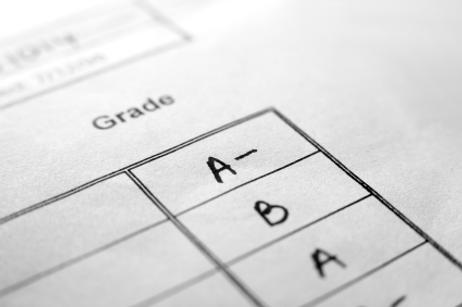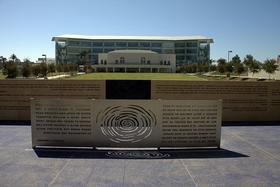Report cards were recently released for the 1,750 schools in the state of Oklahoma under the new evaluation system implemented by the state’s Department of Education. While most schools were not entirely surprised with their marks, some districts complained that the new system did not adequately assess some of their schools. Others are busy celebrating the high marks they received, attributing their outstanding academic performance to a wide variety of factors.
New Grading System Overview
 The Oklahoma legislature created the new method of grading schools to create “accountability and transparency among schools,” according to the . Lawmakers also wanted to make the grading system easy for parents to understand, so they could make educated decisions about the best schools for their children. It was also designed to help schools identify specific weaknesses so that targeted solutions for strengthening and improving schools could be implemented.
The Oklahoma legislature created the new method of grading schools to create “accountability and transparency among schools,” according to the . Lawmakers also wanted to make the grading system easy for parents to understand, so they could make educated decisions about the best schools for their children. It was also designed to help schools identify specific weaknesses so that targeted solutions for strengthening and improving schools could be implemented.
“These report cards are user-friendly, straightforward and fair,” Janet Barresi, State Superintendent of Public Instruction for Oklahoma, told the Oklahoma Daily. “It is high time for parents to have access to this information as they seek to make the best educational choices for their children. Parents have a basic right to this information, and they should be able to find it easily.”
The new grading system employs a formula that takes a number of factors into consideration when determining overall school performance. explains that the new grading system looks at five core academic areas: math, reading, writing, science, and social studies. The breakdown of the formula is as follows:
- Individual Student Performance (33 percent)
- Whole School Performance (33 percent)
- Growth of Students Performing in Bottom Quarter (17 percent)
- Growth of Students in Math and Reading (17 percent)
The assessment considers attendance and graduation rates of students, parent and community involvement, and number of students participating in advanced coursework, as well as standardized test scores. In addition to performance, improvement is also a consideration, which should be a boon to failing schools struggling to improve their performance. However, educators across the state are complaining that the new assessments do not go into enough depth to discover the true quality of an Oklahoma school.
Problems with the New Grading System
The Oklahoma Daily reports that many of the state’s educators, including some college professors, are decrying the methods used to evaluate schools through this new assessment system. Theresa DeBacker, an associate dean at Jeannine Rainbolt College of Education at Oklahoma University, explained that narrowing a school’s complete academic performance into a single letter grade is impossible.
 DeBacker also noted that Oklahoma classrooms are filled with students with broad knowledge levels, learning abilities, and testing skills. Teachers who are responsible for such diverse classrooms should not be held accountable for their students' performance through a single test taken by those students at the end of the school year. Teachers who have students learning English as a second language, or those with severe learning disabilities, can quickly lower the learning curve for the entire class based on this assessment system.
DeBacker also noted that Oklahoma classrooms are filled with students with broad knowledge levels, learning abilities, and testing skills. Teachers who are responsible for such diverse classrooms should not be held accountable for their students' performance through a single test taken by those students at the end of the school year. Teachers who have students learning English as a second language, or those with severe learning disabilities, can quickly lower the learning curve for the entire class based on this assessment system.
The methodology also doesn’t make allowances for poorly funded schools that can’t afford the technology and resources often taken for granted by some of the wealthier schools in the state. Educators worry that giving these schools a poor grade will serve to compound the issues the schools are already facing.
“A lot of this comes down to funding; we’re testing, but not investing,” DeBacker explained. “Now, we’re publically printing the report cards – humiliating the schools while withholding what they need to do their jobs.”
Tulsa Schools Rank at Bottom, Question Methodology
One such example of these concerns is Tulsa Public Schools. The urban district, which faces high poverty rates, gang activity, and violence, has some of the worst-performing schools in the state, according to the new assessment system. Eight schools in Tulsa received failing grades, the highest concentration of failing schools throughout Oklahoma. However, Tulsa school officials told the that the grades received may not accurately depict the performance of Tulsa Public Schools.
“We specifically are working to improve reading scores, math scores and to put in good programs,” Keith Ballard, superintendent of Tulsa Public Schools, told NewsOK. “But we were doing all of that before this, and I have not found the state Department of Education to be particularly helpful in providing assistance to schools.”
The district has implemented some rather drastic changes in recent years in an effort to improve academic performance, including uniforms in all Tulsa schools and the closure of 13 failing schools. The district has also been working to replace ineffective teachers and principals in underperforming schools. However, many of these changes are still in the early stages, so improvement has been small at this point.
Other Schools Celebrating “A” Ratings
While Tulsa schools are dealing with low scores from the new grading system, other school districts are celebrating high ratings. NewsOK also reports that seven districts across the state received “A” grades under the new assessment system, with a total of 160 schools across the state receiving the highest marks. Many of the schools on this list attributed their success to high cooperation between the district and community, strong parental involvement, and high teacher retention rates.
The large majority of Oklahoma schools (48 percent) received “B” grades. Another 34 percent received a “C,” while nine percent earned an “A,” and eight percent earned a “D.” The final one percent of schools earned a failing grade.
Questions? Contact us on Facebook. @publicschoolreview












